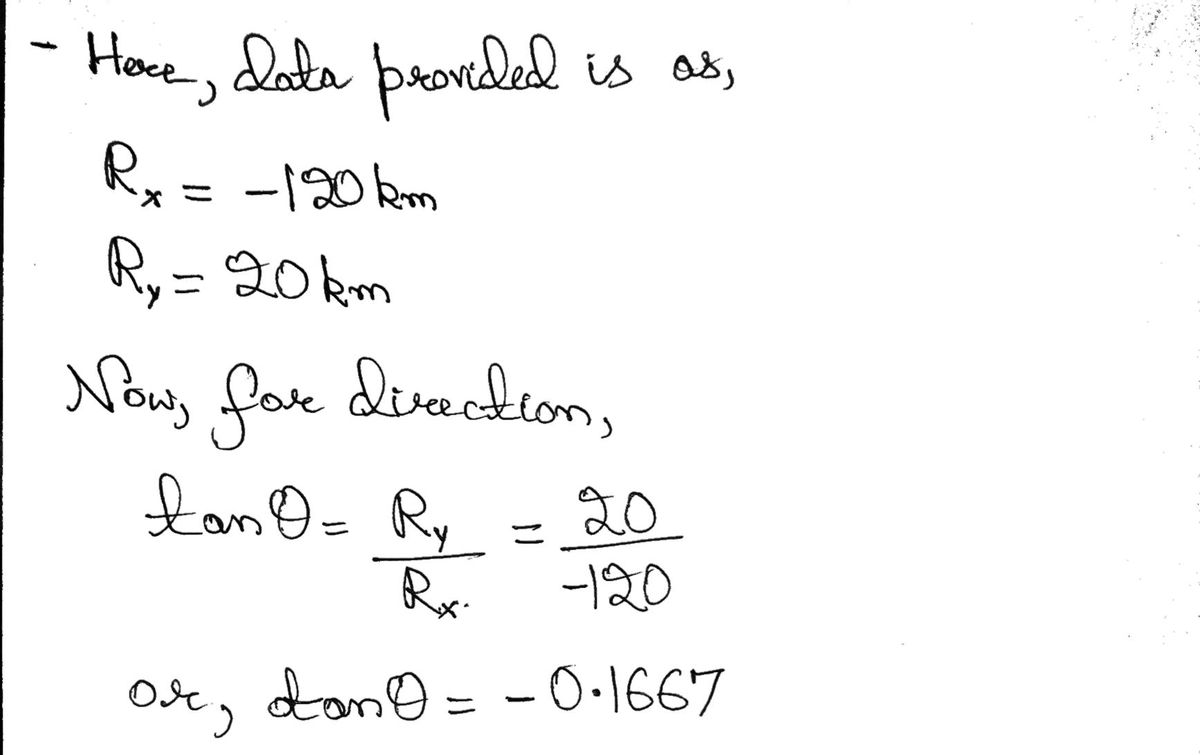Use the diagram and scale to determine the magnitude and direction of the resultant for the vector addition equation. Begin with the table. Scale: 1 square = 20 km along edge B A ♥ H+F+I = ??? G C D H F List the magnitude and direction of each vector. Use a +/- sign for direction (left and down are -). Vector H F I Resultant Use table values, the diagram, SOH CAH TOA, and the Pythagorean theorem to determine the magnitude and CCW direction of R. Direction: Magnitude: 121.6 km X -60 -60 0 -120 °CCW y 40 -60 40 20 Check Answers Use the Number Pad to enter the value of ... Resultant Direction (°CCW) 7 4 1 0 с 8 5 2 9 6 3 +/- Backspace Once done, tap the Enter button. Enter
Use the diagram and scale to determine the magnitude and direction of the resultant for the vector addition equation. Begin with the table. Scale: 1 square = 20 km along edge B A ♥ H+F+I = ??? G C D H F List the magnitude and direction of each vector. Use a +/- sign for direction (left and down are -). Vector H F I Resultant Use table values, the diagram, SOH CAH TOA, and the Pythagorean theorem to determine the magnitude and CCW direction of R. Direction: Magnitude: 121.6 km X -60 -60 0 -120 °CCW y 40 -60 40 20 Check Answers Use the Number Pad to enter the value of ... Resultant Direction (°CCW) 7 4 1 0 с 8 5 2 9 6 3 +/- Backspace Once done, tap the Enter button. Enter
College Physics
11th Edition
ISBN:9781305952300
Author:Raymond A. Serway, Chris Vuille
Publisher:Raymond A. Serway, Chris Vuille
Chapter1: Units, Trigonometry. And Vectors
Section: Chapter Questions
Problem 1CQ: Estimate the order of magnitude of the length, in meters, of each of the following; (a) a mouse, (b)...
Related questions
Question
100%
just need help finding the direction of R, the directions provided are confusing

Transcribed Image Text:**How to Determine Vector Resultants Using a Grid and Scale**
**Instructions:**
1. **Objective:** Determine the magnitude and direction of the resultant vector using the vector addition equation: H + F + I = ???
2. **Scale:** Each square on the grid represents 20 km along each edge.
3. **Vector Details:**
- **H:** (-60, 40)
- **F:** (-60, -60)
- **I:** (0, 40)
- **Resultant:** (-120, 20)
4. **Steps to Follow:**
- Utilize the given data in the table.
- Apply SOH CAH TOA and the Pythagorean theorem to calculate the magnitude and counterclockwise (CCW) direction of the resultant vector (R).
5. **Calculations:**
- **Magnitude of R:** The resultant magnitude is 121.6 km.
- **Direction of R:** Calculate and input the angle in degrees using the number pad, which represents the CCW direction.
6. **Tools Provided:**
- **Diagram:** Visualize vectors including direction and components.
- **Keypad:** Use to enter the calculated CCW direction.
- **Check Answers Button:** Verify your calculated magnitude and direction.
7. **Additional Guidance:**
- Ensure to use a positive or negative sign for direction; negative indicates left or downwards movements.
- For accurate results, double-check values in the table and calculations.
Expert Solution
Step 1 : Basics

Step by step
Solved in 2 steps with 2 images

Knowledge Booster
Learn more about
Need a deep-dive on the concept behind this application? Look no further. Learn more about this topic, physics and related others by exploring similar questions and additional content below.Recommended textbooks for you

College Physics
Physics
ISBN:
9781305952300
Author:
Raymond A. Serway, Chris Vuille
Publisher:
Cengage Learning

University Physics (14th Edition)
Physics
ISBN:
9780133969290
Author:
Hugh D. Young, Roger A. Freedman
Publisher:
PEARSON

Introduction To Quantum Mechanics
Physics
ISBN:
9781107189638
Author:
Griffiths, David J., Schroeter, Darrell F.
Publisher:
Cambridge University Press

College Physics
Physics
ISBN:
9781305952300
Author:
Raymond A. Serway, Chris Vuille
Publisher:
Cengage Learning

University Physics (14th Edition)
Physics
ISBN:
9780133969290
Author:
Hugh D. Young, Roger A. Freedman
Publisher:
PEARSON

Introduction To Quantum Mechanics
Physics
ISBN:
9781107189638
Author:
Griffiths, David J., Schroeter, Darrell F.
Publisher:
Cambridge University Press

Physics for Scientists and Engineers
Physics
ISBN:
9781337553278
Author:
Raymond A. Serway, John W. Jewett
Publisher:
Cengage Learning

Lecture- Tutorials for Introductory Astronomy
Physics
ISBN:
9780321820464
Author:
Edward E. Prather, Tim P. Slater, Jeff P. Adams, Gina Brissenden
Publisher:
Addison-Wesley

College Physics: A Strategic Approach (4th Editio…
Physics
ISBN:
9780134609034
Author:
Randall D. Knight (Professor Emeritus), Brian Jones, Stuart Field
Publisher:
PEARSON